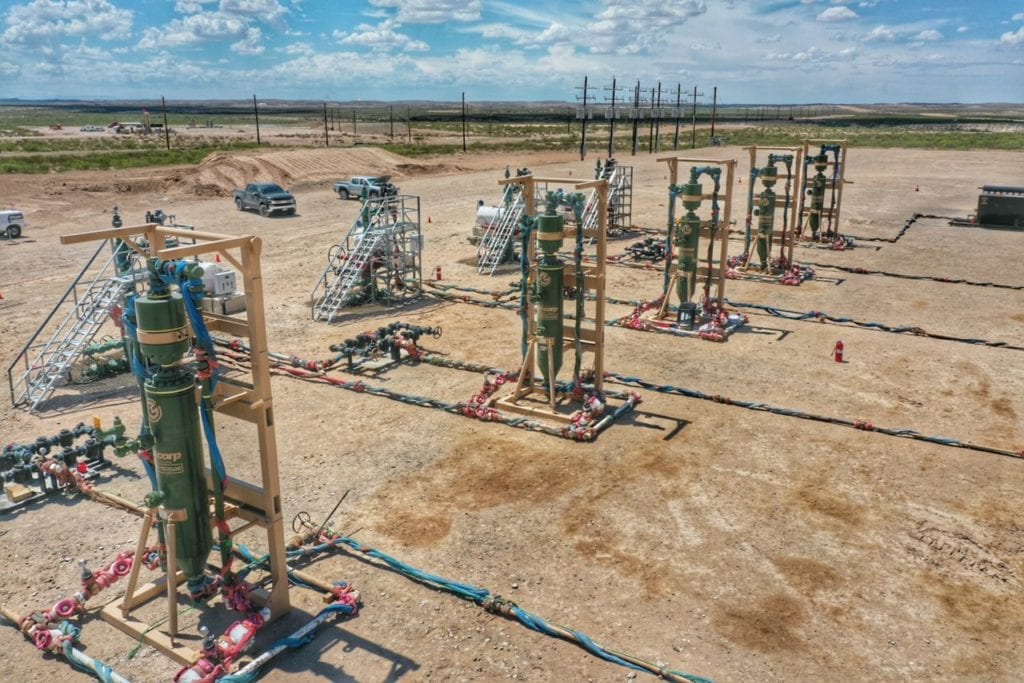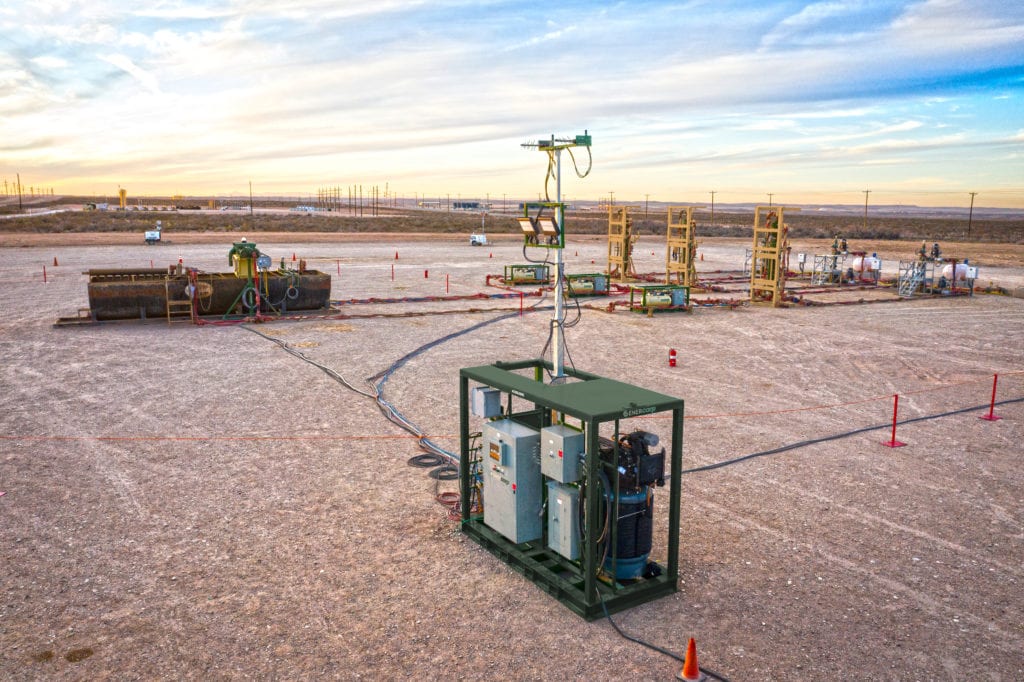
How EnerCorp Leads with Innovation for Flowback Services
Estimated reading time: 7 minutes
Table of contents
- There’s no system or process in existence that’s completely optimized.
- The traditional way flowback was handled
- Developing a more efficient way to provide flowback services
- A different cyclonic sand separator
- A complete ecosystem of automated flowback services, not just a point solution
- How is EnerCorp’s Automated Flowback Ecosystem a Differentiated Approach?
- How does our automation help streamline operations?
- A new way of working requires a change in the process
There’s no system or process in existence that’s completely optimized.
Continuous innovation is how you make yourself better as a person and company. Innovating new processes also lets us deliver more value for our clients tomorrow than today.
Innovation comes in many different forms. Not all of it is as obvious at first glance. Some innovation is refinement, making processes more efficient and effective.
At EnerCorp, we have truly revolutionized flowback and sand management services.
The traditional way flowback was handled
If you rewind the clock 5-10 years, sand management and flowback looked completely different from what we’re doing for operators today. There was a lot of excess non-engineered equipment brought to project sites.
A typical single well job site would have multiple sand separators, a three-phase separator, flare stack, frac tanks, and more. Every piece of equipment required extra personnel to run and manage each unit as well as transportation to and from the job site.
Many companies are still desanding and running flowback jobs in this way today. Using 3-5 large pieces of equipment per well just to provide basic support to manage well pressure, fluids, and solids production.

Developing a more efficient way to provide flowback services
Like many others, we worked this way for a little while with great results. We built our name as a mechanical company that provided exceptional service, putting equipment on location and operating everything manually.
However, we recognized that this approach was far from ideal and, because we have engineers in-house and we have a commitment to innovation, we were in a position to really address our customer’s pain points. We looked at these older processes with an engineer’s eyes. How can we eliminate excess equipment and redefine inefficient processes?
We saw that flowback and sand management required a lot of potentially unnecessary resources – people, equipment, time, and more. Digging into each of these specific processes revealed additional areas where we could make improvements.
For example, previously, you’d have to haul out 3-5 large pieces of equipment to capture sand from a single well. That’s thousands of dollars just on the trucking to get the equipment to the well.
Couldn’t we get the same results for our clients from one piece of equipment?
Using these questions and feedback from some of our most trusted clients, we developed the Sahara Advanced Sand Cyclone.
A different cyclonic sand separator
We spent more than a year developing the Sahara Advanced Sand Cyclone using rigorous Computational Fluid Dynamics (CFD) analysis. It’s precisely engineered to deliver industry-leading sand separation across a broad range of flow regimes.
The Sahara Cyclone is engineered to use the well’s power to create a cyclonic action that will spin the sand out of the production fluids, dropping that sand down into the Sahara’s accumulator.
It offers unmatched sand separation capabilities and provides a range of performance benefits for job sites:
- Greater than 97% sand capture rate
- Potential to remove more than 10,000 lbs of sand from production daily
- Up to 15,000 psi pressure rating
- 30,000 barrels of fluid a day
- 30 million cubic feet of gas
- It cuts down on the footprint on location
Once we engineered the sand separation technology where one piece of equipment was capable of managing solids removal, our pioneering nature inspired us to ask ourselves if we could make it even more efficient. This is when we recognized we could truly take flowback forward and develop an automated sand management ecosystem.

A complete ecosystem of automated flowback services, not just a point solution
Many companies will create a new piece of equipment or technology and stop there. We call this a single-point solution.
With the drive for the oil and gas industry to make processes more efficient and sustainable for the long term, we recognized the need and opportunity to innovate the flowback and sand management space further through automation.
Beyond reducing the equipment needed for flowback, we started looking into other factors like the inherent safety risks. How could we minimize human exposure? How can we reduce the personnel footprint? Could we eliminate a large portion of the emissions produced during flowback operations?
Fortunately, we have an experienced in-house engineering and development team that was ready to answer these questions and take the next step in transforming the flowback and sand management industry.
That next step was to provide more precision and consistency in our work through automation.
How is EnerCorp’s Automated Flowback Ecosystem a Differentiated Approach?
Every well is different.
Nobody would expect a producing well in Texas to look exactly like a well in Pennsylvania.
But even within the same region, wells drilled in close proximity, with similar well plans, can present significantly different characteristics and issues.

So you can’t apply cookie-cutter approaches and expect optimal results.
We’re a fully integrated company – we design and develop our technology, manufacture and maintain the equipment, and operate the equipment in the field. We work with clients to find the right solution for their specific needs.
Our automated flowback technology (eFlowback) is not plug-and-play. It delivers a high-efficiency rating because we have a team of engineers who meet and work with the client before a job to go over the details then tune our technologies for the specific job. We don’t supply a generic piece of equipment.
How does our automation help streamline operations?
A considerable portion of what needs to be done during flowback services is managing the sand returns and monitoring site conditions. As the accumulator fills up, people need to be on hand to open valves to release and measure sand. They had to be onsite to check what was produced. Adding to the staffing requirements, these jobs are managing high pressures so you’re putting people in the red zone.
Our automated sand management process makes it easy to manage these processes with greatly reduced manpower on site. The system autonomously opens and closes valves, monitors pressures, monitors tank levels, and weighs sand as it’s produced.
The automated technology allows you to remotely monitor the flowback operation and identify the onset of any potential leak or other problems before the issue would be visible on location. Additionally, having more data at your fingertips helps make the job safer and reduces the emissions profile of these jobs.
Best of all, you can see all this information in real-time no matter where you are in the world – even from the comfort of your couch or office.

A new way of working requires a change in the process
With a traditional flowback or sand management company, you’ll call them up a day or two before the job starts to let them know they need to rig up on your well soon. They come out the next day with their standard set of equipment and get started.
Because our system is designed specifically for your well’s characteristics, and our automation ecosystem has the capability to link into your SCADA platform, we engage with you earlier in the planning process.
How much planning do you need? Ideally, you’ll start talking with us as soon as you can, but a good rule of thumb is about 2-4 weeks before you bring your well online.
It’s a change in the normal process, not a major one, but it will bring dramatically enhanced flowback and sand management performance.
Are you ready to innovate your flowback service?
Share this Article
